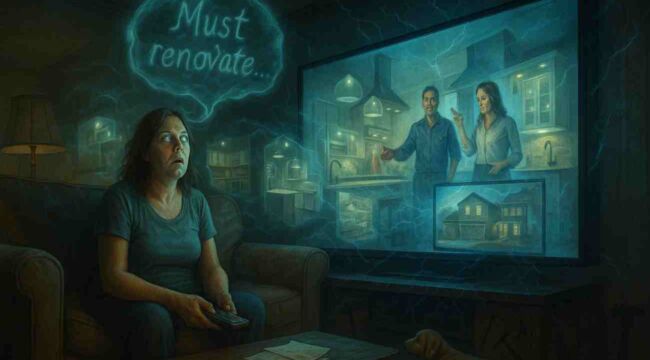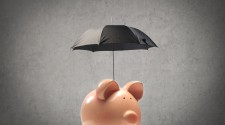The HGTV Mind Virus
Here in the Sharp household, a bathroom remodel is underway. We held off for the first 12 years in this house, so the master bath was in its original 1987 state for 38 years.
All our friends and neighbors had long since upgraded their bathrooms.
But it was hard to justify a remodel because everything worked fine, even if it looked dated. But over the past year, the tile started to chip and the tub looked dingy. It was finally time.
On the flip side, I’ve seen a friend with zero retirement savings spend $60,000 on a kitchen remodel. The appliances were maybe 8 years old and worked fine. The counters and cabinets were simple, but also completely fine.
I blame HGTV (Home and Garden TV). His wife watches religiously. That noxious cable network has done more for Home Depot stock than every hurricane combined.
My wife used to watch those home renovation shows. The hosts would come into a perfectly serviceable kitchen, wrinkle their noses, and with a nasally tone say, “Yuck. Everything needs to go”.
Keeping Up With the Joneses
HGTV is a sort of mind virus. It infects viewers with the idea that their house is shabby and in need of glorious upgrades.
The way these shows present perfectly good houses as hideous and dated is annoying. There’s nothing wrong with having older appliances, cabinets, flooring, and fixtures.
To be clear, if you have the funds to do renovations, and it brings you happiness, have at it. What worries me is how people will take out a home equity loan, or even borrow from their retirement accounts to fund needless renovations.
Savings and investment should come first. Optional home improvements later.
This speaks to a broader problem in America. We spend well beyond our means.
An Unhealthy Fixation
It’s not just remodels and renovations. It’s our entire consumption-based society.
When my kids were younger, going to all the birthday parties was fun, but also bothersome in a way.
Watching a kid open 20 brand new presents, almost all imported from China, of which they might end up playing with 1 or 2, always felt off. The vast majority would wind up at Goodwill or in the trash.
As a result, we usually told parents to skip the gifts at our kids’ parties.
It’s not healthy for a society to be so focused on consumerism.
When Will Consumerism Peak?
The American economy is famously driven by consumer spending. They say it accounts for about 70% of GDP. A crazy number.
So… What will happen when Americans are inevitably forced to slash spending?
Stocks will fall, leading to even lower consumer spending, leading to lower stock prices, and on and on… It will be a difficult but necessary part of the coming transition to a more sustainable economy.
Of course, we must also factor in the Federal Reserve and government’s inevitable response. The government will send out stimulus checks, much of which will rapidly be deposited into brokerage accounts and sports books. But some will go to pay off debt and buy groceries.
The Fed will cut rates and restart QE, attempting to keep the status quo intact for a while longer.
These measures may slow the shift, but they won’t stop it. Eventually we simply need to quit spending so much money on frivolous things.
This shift in consumer habits is likely still a few years off. But it is inevitable.
It’s one of the reasons I support smart tariff policy. As President Trump said back in April, in response to a question about the impact of tariffs on toys and other consumer goods:
Well, maybe the children will have two dolls instead of 30 dolls. You know, and maybe the two dolls will cost a couple of bucks more than they would normally.
There’s truth there. And yet, until we reach the tipping point, American overspending and under-saving will continue.
All we can do is watch the slow-motion train wreck play out. And prepare our portfolios for what lies ahead…
More on that soon.



Comments: